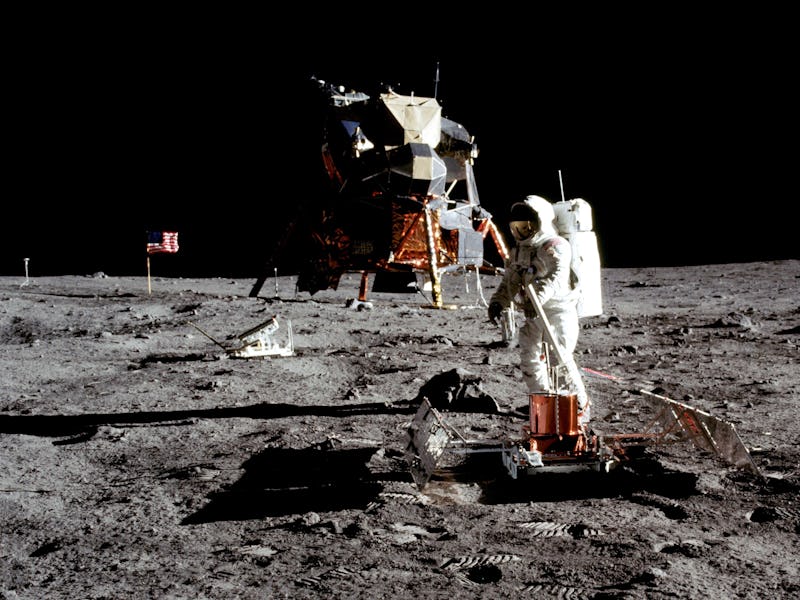Can We Get to Mars Sooner If We Refuel on the Moon?
If we build a rocket-fuel station on moon, getting to Mars would be a piece of cake. (Or, a bit easier.)

These days, everyone is weighing in on how to get people to Mars.
Enter Takuto Ishimatsu. The postdoctoral researcher at MIT and the University of Tokyo has his own plan: Build a rocket-fuel station on the moon and save 68 percent of rocket weight at liftoff.
“Quantitatively, it turned out in our study that a stop at the moon would be the best in terms of total launch mass from Earth to low Earth orbit, which is often used as a measure of the mission cost,” Ishimatsu tells Inverse.
“Even qualitatively speaking, it is fairly intuitive that a ‘travel light and live off that land’ strategy would be the best particularly in the longer term, as it has well-served terrestrial explorers for centuries.”
Takuto Ishimatsu
He details the plan in his Ph.D. thesis, and in an upcoming paper in the Journal of Spacecraft and Rockets.
The problem that Ishimatsu tackles is well-known. The amount of rocket fuel required to get a spaceship and human cargo from Earth all the way to Mars would be enormously heavy, making it an expensive and technically ambitious proposition.
But if we only had a fueling station on the moon, we could harvest soil and frozen water and process it into liquid oxygen and hydrogen fuel. Then, the rocket from Earth would only need enough fuel to get into orbit. From there, a refueling vessel would come from the moon and send the spaceship on its merry way to Mars.
This would take a lot of infrastructure. “We assume it is automated or tele-operated with robots, which may or may not include regolith [soil] excavating and collecting rovers, mining equipment, resource processing equipment, power plants and solar arrays, propellant storage tanks, ascent vehicles, orbital transfer vehicles, etc.” writes Ishimatsu.
An artist's concept of what a fuel station on the moon might look like.
The moon is definitely an integral part of NASA’s recently released plans to get to Mars, though not exactly in this way. NASA scientists see our moon more as a training ground to test technologies for the Martian mission.
NASA has its own ideas about overcoming the fuel issue. It’s working on technology to harvest energy from the Sun to get rockets from beyond Earth’s orbit to the red planet. Solar electric propulsion won’t be enough to get rockets away from Earth’s gravity, but it could work the rest of the way.
“Compared to chemical propulsion, electric propulsion provides very low levels of thrust; however, it is incredibly efficient and can provide thrust continuously for months or years, allowing more mass to be transported with far less propellant,” according to the NASA report, “Journey to Mars.”
An artist's concept of NASA's planned Space Launch System, to become the most powerful rocket ever built.
Ishimatsu admits his lunar fuel station is still a few decades out, and may not be the quickest route to get the first humans to Mars. But he’s thinking long-term. “The results of this study are more about establishing a sustainable logistics strategy for recurring missions, not for the very first mission to Mars,” he says.
“Thinking far ahead into the future of space exploration, I believe, as Elon Musk of SpaceX and many others do, that humanity is going to be a multi-planet species and that our first ultimate goal is to colonize Mars and to establish a permanent, self-sustainable human presence there. But at the same time, equally important is ‘paving a road’ in space so that we can travel between planetary bodies in a more affordable way.”
Could scenes like this one from 'The Martian' become commonplace in our lifetime?